Lawn Weeds may be green, but they are plants growing where they’re not wanted within your lawn.
Lawn Weeds can take any form and can vary depending on where they grow and typically produce large numbers of seeds, assisting their spread.
Unfortunately, weeds are often excellent at surviving and reproducing and are commonly the first plants to colonise and dominate.
Our full guide below offers lawn lovers a comprehensive guide that helps identify Common Lawn Weeds and gives guidance on prevention, control & best herbicides to use.
The trick to preventing weeds from taking hold is to keep your lawn in good condition.
Always remove seed heads from weeds and take care when digging them out to remove all of the roots.
MOST COMMON LAWN WEEDS AND HOW TO CONTROL THEM
WINTER GRASS
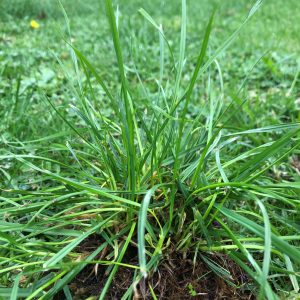
About the weed
Winter Grass is a widespread lawn weed problem throughout Australia and is more prevalent in winter and spring.
Winter Grass is characterised by its prolific seed production which makes it hard to manage.
If seeds appear, they are quick to germinate, and it is more than likely you will have Winter Green in your lawn again the following year.
The Winter Grass weed is a pale green colour with smooth leaves and has a white cotton-like root zone.
While Winter Grass is easy to remove my hand, as there is so much of it often it grows back.
Control
There are two methods of controlling Winter Grass – post-emergent and pre-emergent herbicide control.
Post-emergent control is when you selectively poison out the Winter Grass weed after it germinates (for example, during the autumn and winter months).
The most important thing is to apply the post-emergent control exactly as directed. The herbicide can take a considerable amount of time to work, anywhere from between two weeks and two months.
If the post-emergent is applied too late into the winter, it can be hard to get a result.
Pre-emergent control works on the basis that you control the seed before it germinates which is an easier way to manage the problem. Application is usually going into winter.
We recommend a pre-emergent herbicide with the Common Active Ingredient of Oxadiazon.
We suggest using OxaFert, a combination fertiliser and pre-emergent herbicide that can be purchased from ourselves.
CROWSFOOT GRASS
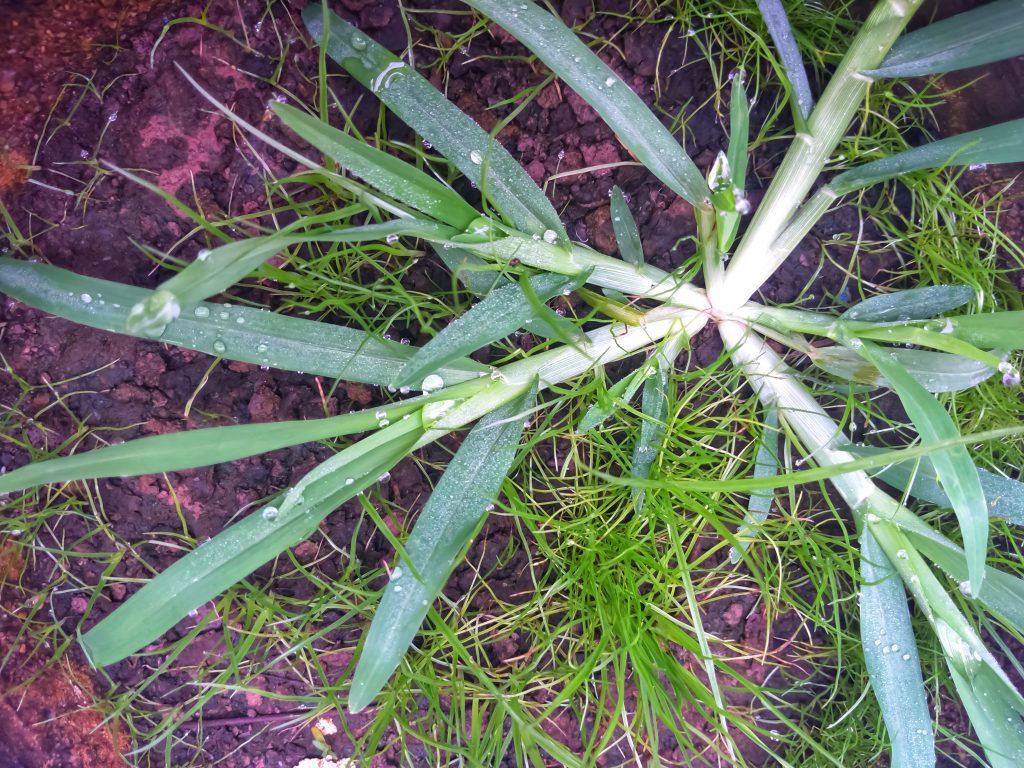
About the weed
Crowsfoot Grass is a hardy annual lawn weed that grows during spring, summer and autumn.
It is a tufted, short-lived, grass with spreading of semi-upright stems growing up to 60cm tall.
Crowsfoot has leaf sheaths that are prominently keeled with a membranous structure (5cm to 10cm long) at the base of the leaf blade.
Its narrow leaf blades (3cm to 35cm long and 30cm to 80cm wide) are mostly hairless.
Crowsfoot Grass has seed-heads with 1-15 branches (3.5cm to 15.5cm long) that radiate outwards from the same point.
Numerous flower spikelets (35cm to 70cm long) are densely arranged along the seed-head branches.
Crowsfoot grows in all soil conditions and can survive in heavily compacted areas where Couch grass won’t grow and may survive for more than a year in climates not subject to frost
This low-growing weed is capable of setting seed even when closely mown.
Control
For the control of Crowsfoot, we recommend a pre-emergent herbicide with the Common Active Ingredient of Oxadiazon.
We suggest using OxaFert, a combination fertiliser and pre-emergent herbicide that can be purchased from ourselves.
CRABGRASS
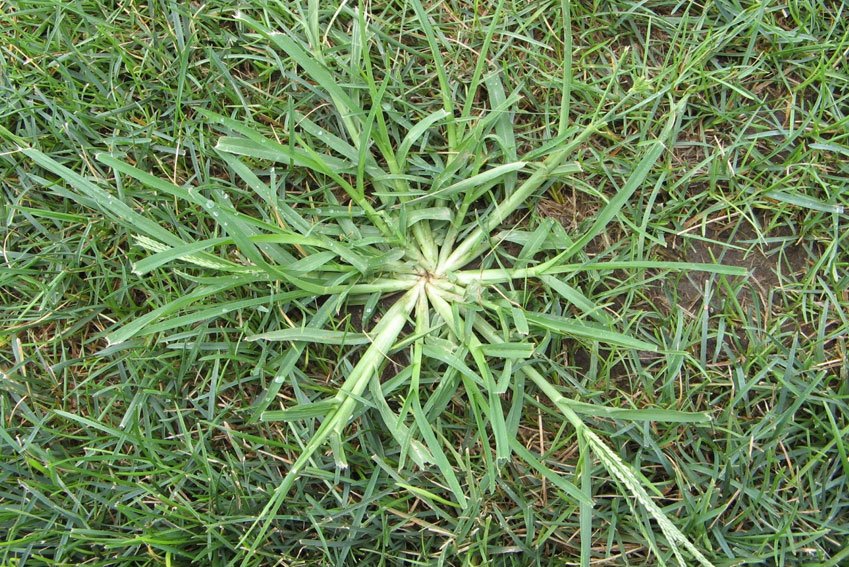
About the weed
Crabgrass is one of the worst lawn weeds in the world, and when found the homeowner should never hesitate in removing or killing it as soon as possible.
Due to the severity of Crab Grass weed and how fast it can spread, it simply must not be ignored.
Crabgrass is easily known by most people, it is most noticeable by its wide leaf blade and grass-like appearance.
This grass, however, will send out tough stems with fingers of seed heads at its tips. Crabgrass will become most prominent when it’s leaf blades grow faster than the surrounding lawn and when it reaches out and become taller than the other turf.
The seed production of Crabgrass is extremely prolific. Every season, a single weed can send out thousands of seeds, so it’s easy to see how it can quickly spread and take-over and ruin an entire lawn.
Control
Ongoing control of Crabgrass involves regular year-round lawn mowing which will aid in constantly removing new weed seeds as they are produced and before they mature.
If you need to use a herbicide we recommends a pre-emergent herbicide with the Common Active Ingredient of Oxadiazon.
We suggest using OxaFert, a combination fertiliser and pre-emergent herbicide that can be purchased through us.
OXALIS WEED
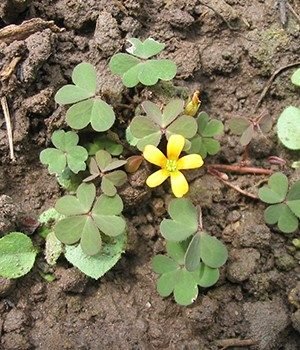
About the weed
Oxalis can appear like a miniature clover plant, but it bears tiny yellow flowers.
Some gardeners occasionally grow Oxalis for groundcover but for most of us it is an annoying weed.
Oxalis is a perennial weed, which spreads through interlocking rhizomes that are easy to break apart, these rhizomes eventually produces tiny bulbils.
The seeds of Oxalis are prolific and ejected when ripe from tiny seed pods that look like mini okra.
Anywhere the stem touches the ground the Oxalis weed can root, potentially producing more and more plants.
Oxalis also forms a fleshy taproot and an extensive branching root system which can make it challenging to manage.
Control
Hand removal can be done but it is slow and laborious, and it may take several seasons to remove the Oxalis from your lawn.
For the control of Oxalis, we recommend a pre-emergent herbicide with the Common Active Ingredient of Oxadiazon.
We suggest using OxaFert, a combination fertiliser and pre-emergent herbicide that can be purchased through us.
SUMMER GRASS
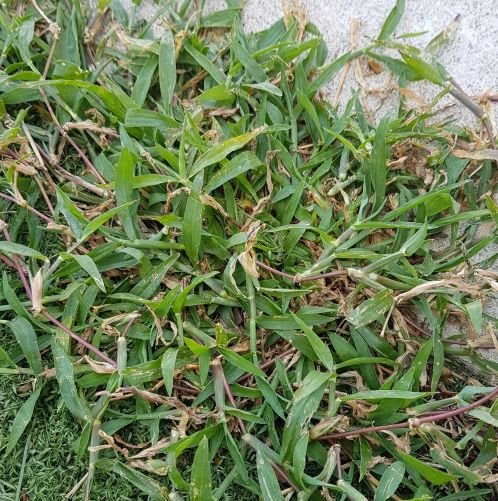
About the weed
Summer Grass is a common fast-growing lawn weed, found Australia-wide, that sends out shoots in all directions from its centre during conditions of high heat and humidity.
Summer Grass spreads prolifically through its stolons, with stems that can be brown or red in colour and thin grey-green leaves with fine spiky seed heads that shoot upwards.
When first noticed in your lawn, Summer Grass should be removed immediately by hand as it competes with your turf for nutrients and growing space.
Summer Grass goes to seed during autumn and if not controlled re-emerges the next year.
Competition is greatest from Summer Grass when it is thin and open, the mowing height is incorrect and light frequent irrigations are applied.
Control
Once Summer Grass appears it is hard to control so prevention is the key and feeding your lawn with fertiliser will assist.
Therefore, for the control of Summer Grass, we recommend a pre-emergent herbicide with the Common Active Ingredient of Oxadiazon.
We suggest using OxaFert, a combination fertiliser and pre-emergent herbicide that can be purchased through us.
MULLUMBIMBY COUCH
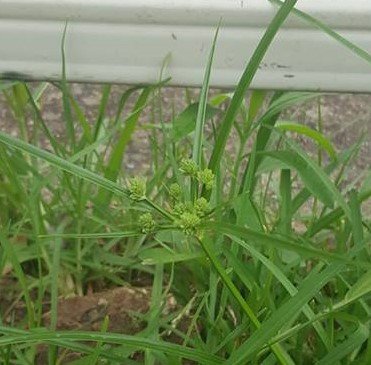
About the weed
Mullumbimby Couch grows year-round and is a mat-forming grass-like plant with long underground runners and upright flowering stems measuring up to 40cm in height.
The weed has tough long, rhizomes which are red to purple in colour and stems that are triangular in cross-section.
Mullumbimby Couch has bright green leaves (10cm to 30cm wide) that are hairless and sheath the stem at the base.
Its pale green seed-heads (60cm to 70cm long) have three or four green leafy bracts at the base and contain numerous small flower spikelets which appear throughout spring and summer.
Mullumbimby Couch has ‘seeds’ yellow to reddish-brown in colour.
Conducive growing conditions for Mullumbimby Couch occur when there is excessive soil moisture and humidity.
Mullumbimby Couch is a member of the Sedge family and can quickly colonise areas of the garden by setting seed and underground rhizomes.
Control
Control of Mullumbimby Couch is difficult. You can use a spade to remove the weed but ensure that no roots or bulbs are left in the soil or it will reappear.
Alternately for the control of Mullumbimby Couch, we recommend a selective herbicide with the Common Active Ingredient of Halosulfuron-methyl.
We suggest using Apparent Halosulfuron, a selective herbicide that can be purchased through us.
NUT GRASS
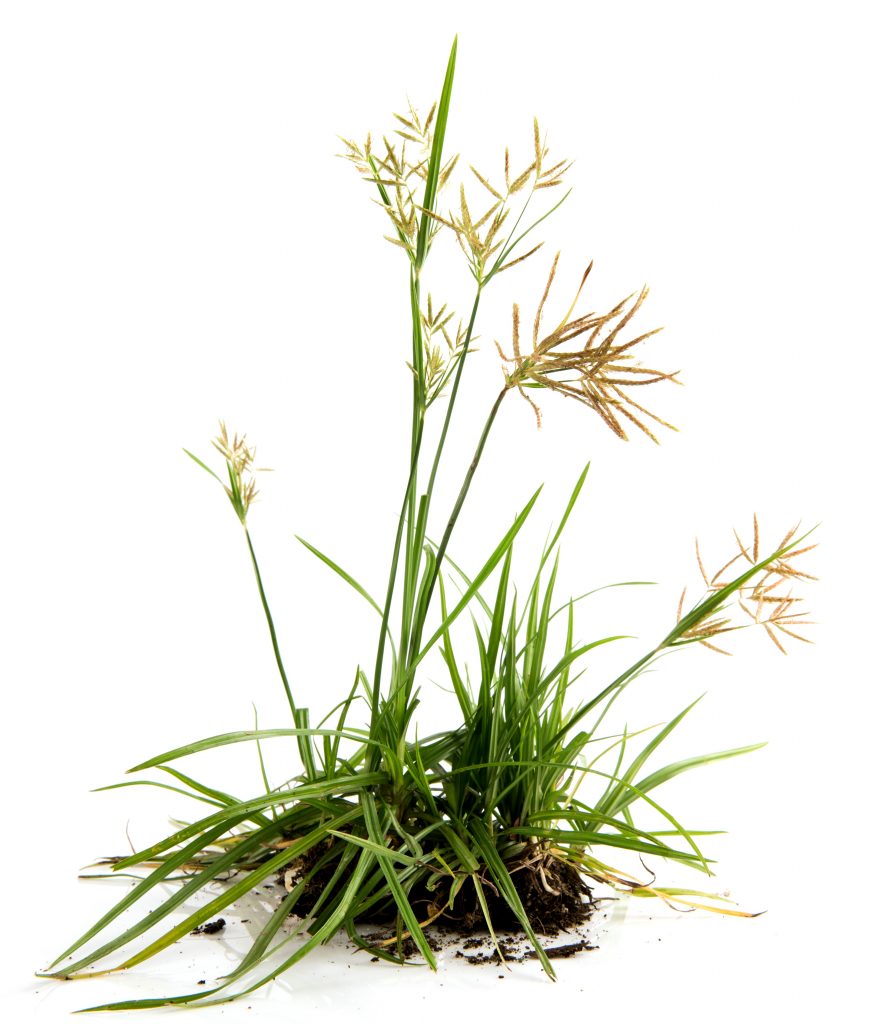
About the weed
Nut Grass is a long-lived grass-like plant that is a member of the Sedge family and can be found in your lawn year-round.
The weed usually grows to about 20cm to 50cm in height and produces a network of creeping underground stems with small tubers (100cm to 250cm long).
Nut Grass has upright flowering stems that are smooth and three-angled in cross section.
The weed has very narrow leaves (7cm to 20cm long and 20cm to 60cm wide) which are borne in a tuft at the base of the stems.
Its seed heads have three to eight branches that vary in length (up to 10cm long) and are supported by two to four green leafy bracts.
The easiest way to distinguish Nut Grass is through the branches which have several elongated reddish-brown or purplish-brown flower spikelets (100cm to 250cm long and 20cm to 25cm wide).
Control
Nut Grass control is very similar to that of Mullumbimby Couch and is also difficult to control.
A spade can be used to remove the weed but ensure no roots or bulbs are left in the soil or it will reappear.
Alternately for the control of Nut Grass, we recommend a selective herbicide with the Common Active Ingredient of Halosulfuron-methyl.
We suggest using Apparent Halosulfuron, a selective herbicide that can be purchased through us.
PASPALUM
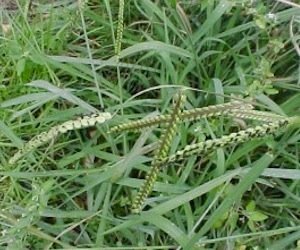
About the weed
Paspalum is one of the most difficult lawn weeds to control and predominantly found in the south-eastern states of Australia.
It is a long-lived tufted grass growing up to 1.5m tall with slightly folded leaf blades at the base which are usually hairless.
Paspalum’s seed-heads are borne at the tips of upright flowering stems and have 2-11 branches (2.5cm-11cm long) that are alternatively arranged along a main stalk.
Each Paspalum seed-head branch bears numerous small flower spikelets that are covered with hairs.
Paspalum mainly grows throughout the warmer months from late spring to autumn.
The weed prolifically spreads through its sticky seeds which easily grasp onto pets and shoes before been relocated.
Control
Like with most weed control, removing by hand is the best method as long as the entire plant and roots are removed.
We suggest using Bow and Arrow, a herbicide that can be purchased through ourselves.
For the control of various Broadleaf Weeds. Bow and Arrow Herbicide is the standard for broadleaf weed control in the Australian turf industry. Safe for use with Buffalo Turf.
DANDELION WEEDS
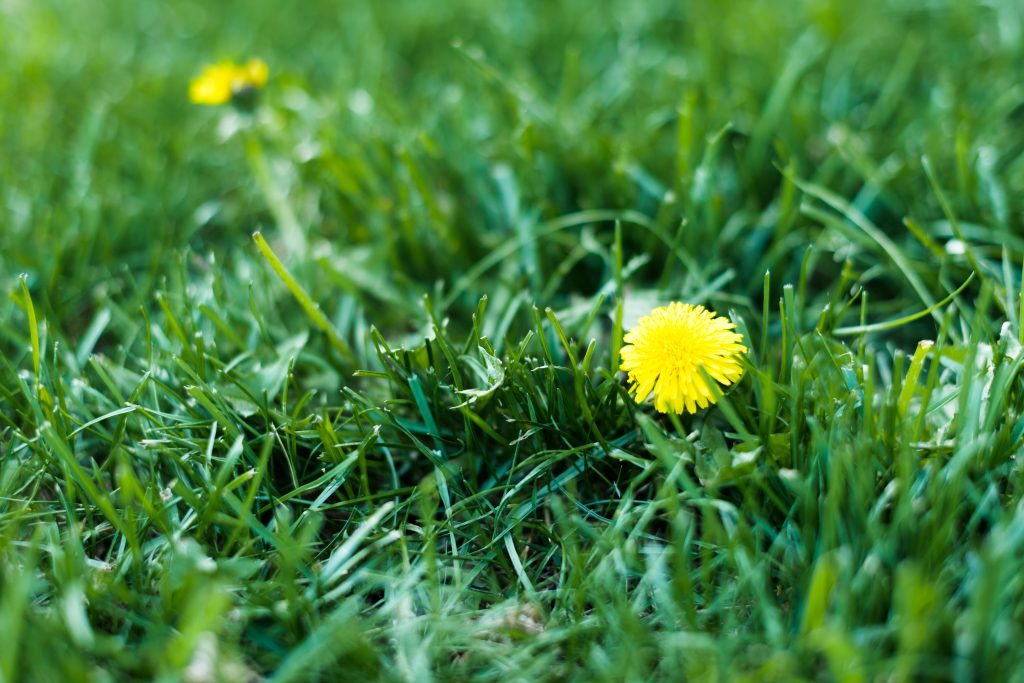
About the weed
Dandelions have green leaves edged with teeth’ that grow mostly flat to the ground and are distinguished by their bright yellow flowers that fade to form a white puffball.
They appear in spring and autumn in lawns that aren’t as full and healthy as they could be.
Above-ground, Dandelion seeds ride the wind currents, and drop into the slightest opening in your lawn and propagate.
Below-ground, the Dandelion weed lays down a taproot up to 25cm long however, pulling the taproot as a means of removal is problematic.
The Dandelion’s thick, brittle roots easily split, and any fraction left behind will regenerate.
Control
With careful digging and pulling the Dandelion weed can be removed by hand.
Using post-emergence herbicides (referred to as broadleaf weed control) are the most effective dandelion killers that are safe for lawns. The Common Active Ingredient 2,4-D is an example of a selective and systemic post-emergent herbicide.
We recommend a post-emergence herbicide such as Bin-Die which can be purchased through us.
WHITE CLOVER
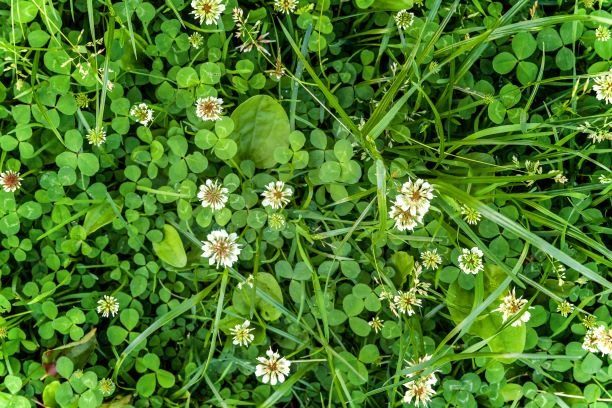
About the weed
White Clover is a classic three-leaf clover with bright green leaves adorned with white crescent shapes.
It appears from spring through to autumn and usually in thin lawns with nutrient-poor soil.
White Clover grows in a creeping manner and will develop roots wherever a stem node touches the ground.
The flowers on White Clover are spiky and white with a brownish green centre.
Control
If White Clover is established in your lawn you can start by hand removal.
However, if White Clover is prolific throughout your lawn then a pre or post-emergent herbicide is recommended but first check with your Local Garden Centre to ensure it is suitable for your lawn type.
It is important to note that killing White Clover weed is easy but killing the White Clover seed is not.
White Clover has seeds that can survive high heat, low temperatures and can stay dormant for years before germinating.
Therefore, be prepared to hand weed or we recommend a pre-emergent herbicide with the Common Active Ingredient of Oxadiazon.
We suggest using OxaFert, a combination fertiliser and pre-emergent herbicide that can be purchased from us.
BINDI WEED
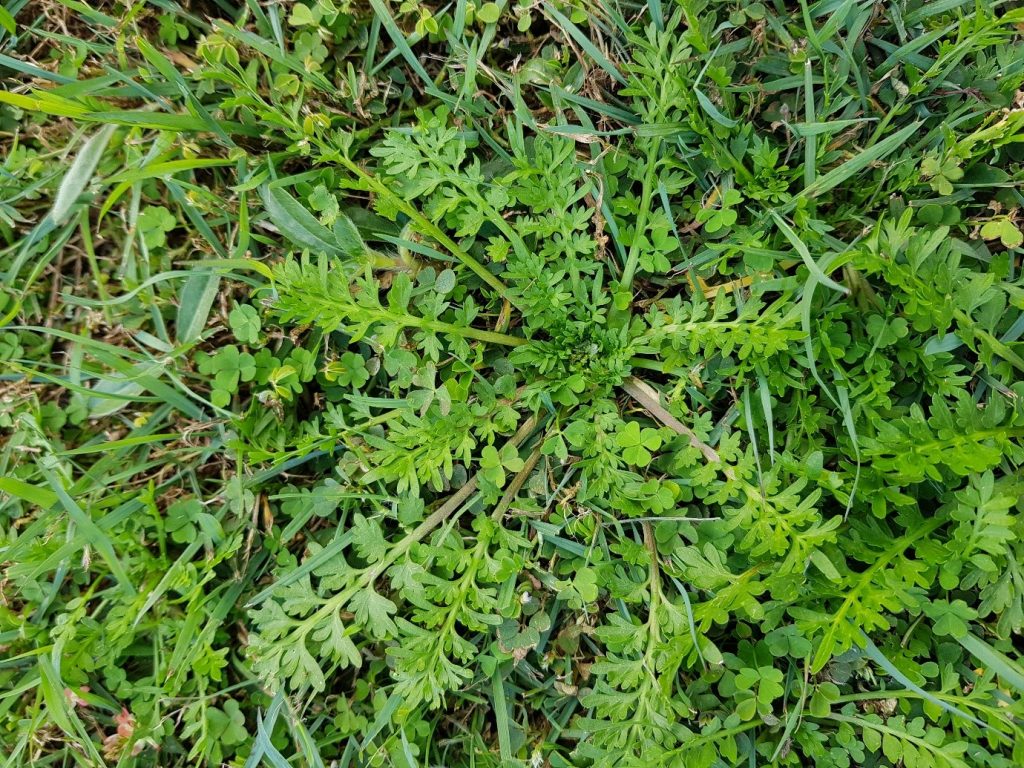
About the weed
Bindi Weed is a broadleaf winter annual that is also known as Lawn Burweed and Spurweed.
It is a very invasive, low growing weed that produces bur-like fruit that poses a hazard to humans and animals due to their sharp edges.
The weed evolves during winter and develops carrot-like leaves, during spring it produces a single flower that matures to form a prickly seed pod with three spines.
Control
The best time to remove Bindi Weeds is during late winter or spring.
If you only have a small amount of Bindi in your lawn, then hand removal is suitable if you remove the plant along with the roots.
If your lawn is rife with Bindi, then we recommends a Broadleaf Weed Herbicide with the Common Active Ingredients of Clopyralid, Diflufenican and Potassium Salt.
We suggest using Bow & Arrowe, a Broadleaf herbicide or Bin-Die which can be purchased through us.
